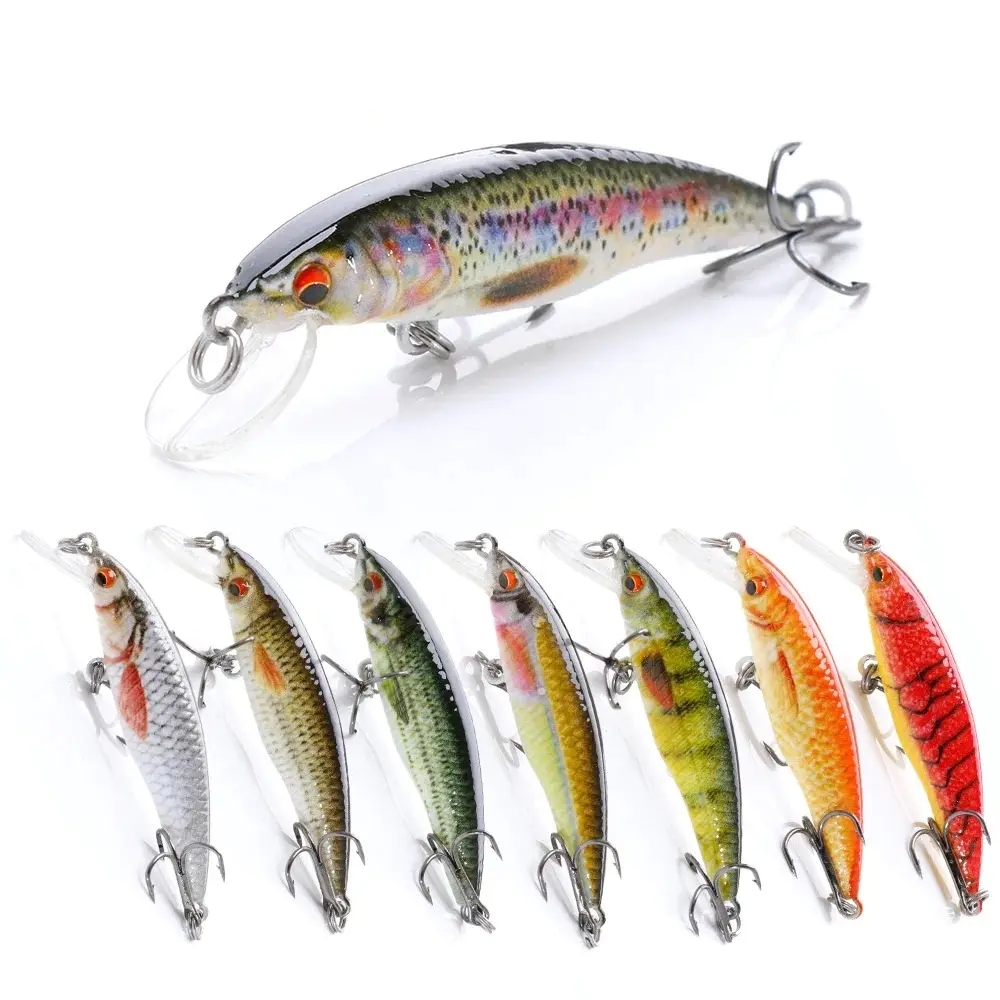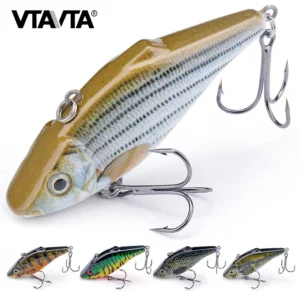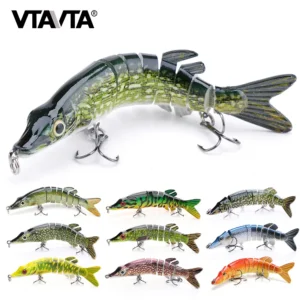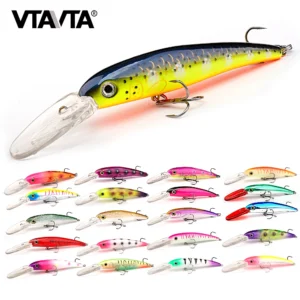What Lures to Use for Saltwater Fishing: The Ultimate Guide to Hooking Big Fish in the Ocean
There’s nothing quite like the thrill of saltwater fishing. The vastness of the ocean, the tug of a powerful fish on your line, and the salty breeze on your face—it’s an experience that keeps anglers coming back for more. But with so many fish species and fishing conditions, one question often arises: What lures to use for saltwater fishing? Whether you’re a seasoned pro or a beginner, this guide will walk you through the best lures for saltwater fishing, how to use them, and tips to maximize your success on the water.
Why Saltwater Fishing Lures Matter
Saltwater fishing is a whole different ballgame compared to freshwater fishing. The ocean is home to a wide variety of fish species, each with its own feeding habits and preferences. Additionally, saltwater environments—whether it’s the open ocean, rocky shores, or sandy beaches—present unique challenges like strong currents, tides, and corrosive saltwater. Choosing the right lure can mean the difference between a day of frustration and a day of landing trophy fish.
Top Saltwater Fishing Lures and How to Use Them
When it comes to saltwater fishing, not all lures are created equal. Here’s a breakdown of the most effective lures and how to use them:
1. Jigs
Why They Work: Jigs are versatile and can be used in a variety of saltwater environments. They mimic injured baitfish, making them irresistible to predatory fish.
Best For: Species like snook, redfish, and striped bass.
How to Use: Cast and retrieve with a bouncing motion to mimic a wounded fish. Vary your retrieve speed to find what works best.
2. Spoons
Why They Work: Spoons have a wobbling action that mimics the flash and movement of small fish. They’re especially effective in clear water.
Best For: Mackerel, bluefish, and tarpon.
How to Use: Cast and retrieve at a steady pace, or use a jerking motion to create erratic movements.
3. Soft Plastics
Why They Work: Soft plastics come in a variety of shapes and sizes, mimicking everything from shrimp to squid. They’re highly customizable and can be rigged in multiple ways.
Best For: Flounder, speckled trout, and snapper.
How to Use: Rig them on a weighted hook or jig head and use a slow, steady retrieve. Add occasional twitches to make them look lifelike.
4. Topwater Lures
Why They Work: Topwater lures create surface disturbances that trigger aggressive strikes from fish. They’re especially exciting to use because you can see the fish attack the lure.
Best For: Tarpon, snook, and jack crevalle.
How to Use: Cast near structure or schools of baitfish and use a “walk-the-dog” retrieve or a popping motion to attract fish.
5. Diving Plugs
Why They Work: These lures dive underwater and mimic the movement of baitfish. They’re great for targeting fish at different depths.
Best For: Grouper, kingfish, and barracuda.
How to Use: Cast and retrieve at a steady pace, or use a stop-and-go retrieve to mimic a fleeing fish.
6. Bucktail Jigs
Why They Work: Bucktail jigs combine the action of a jig with the added attraction of hair or synthetic fibers. They’re excellent for imitating baitfish or crustaceans.
Best For: Striped bass, bluefish, and flounder.
How to Use: Use a slow, bouncing retrieve near the bottom or around structure.
7. Trolling Lures
Why They Work: Trolling lures are designed to be dragged behind a moving boat, covering a lot of water and attracting fish from a distance.
Best For: Tuna, mahi-mahi, and wahoo.
How to Use: Troll at varying speeds and depths to find where the fish are biting.
Factors to Consider When Choosing Saltwater Lures
Selecting the right lure isn’t just about picking the most popular option. Here are some factors to consider:
1. Target Species
Different fish are attracted to different types of lures. Research the feeding habits of the species you’re targeting.
2. Fishing Location
Are you fishing in shallow flats, deep offshore waters, or rocky shorelines? The location will influence your lure choice.
3. Water Conditions
Clear water may require more natural-looking lures, while murky water calls for brighter colors and more vibration.
4. Tides and Currents
Fish are more active during certain tidal movements. Plan your lure selection around the tides for better results.
Tips for Maximizing Your Success with Saltwater Lures
Here are some expert tips to help you get the most out of your saltwater fishing lures:
Match the Hatch
Use lures that mimic the local baitfish or prey in the area you’re fishing.
Experiment with Colors
Bright colors like chartreuse and pink work well in murky water, while natural colors like silver and white are better for clear water.
Change Your Retrieve
If one retrieve style isn’t working, try another. Sometimes a slow, steady retrieve works best; other times, a fast, erratic retrieve is the key.
Use Scent Attractants
Adding a scent attractant to your lure can make it more appealing, especially for species like snapper and grouper.
Check Your Gear
Saltwater is corrosive, so rinse your lures and gear with freshwater after each use to prolong their lifespan.
Real-Life Success Stories
To give you a better sense of how effective saltwater lures can be, here are a few real-life experiences from anglers:
Story 1: The Redfish Hunter
Jake, an avid redfish angler, swears by soft plastic shrimp lures. On a recent trip to the Gulf Coast, he landed a 30-inch redfish using a slow, twitching retrieve near oyster beds. His advice? “Match the hatch and be patient.”
Story 2: The Tuna Troller
Sarah, a deep-sea fishing enthusiast, uses trolling lures to target tuna off the coast of North Carolina. Her secret weapon? A cedar plug that consistently outproduces other lures. Her tip? “Vary your trolling speed to find what the fish want.”
Story 3: The Snook Specialist
Mike, a Florida angler, relies on topwater lures to catch snook in the mangroves. His favorite lure? A walking bait that creates a commotion on the surface. His advice? “Fish during the early morning or late evening for the best results.”
FAQs About Saltwater Fishing Lures
1. What’s the best lure for beginners?
Soft plastics are a great starting point because they’re versatile and easy to use.
2. Can I use freshwater lures in saltwater?
While some freshwater lures can work in saltwater, it’s best to use lures specifically designed for saltwater to avoid corrosion.
3. How do I clean my saltwater lures?
Rinse them with freshwater after each use and store them in a dry place to prevent rust.
4. What’s the best time to fish with lures in saltwater?
Early morning, late evening, and during tidal changes are the most productive times.
Conclusion: What Lures to Use for Saltwater Fishing
Saltwater fishing is an adventure like no other, and having the right lures in your tackle box can make all the difference. From jigs and spoons to topwater lures and soft plastics, there’s a lure for every situation and species. By understanding the habits of your target fish, matching your lure to the conditions, and experimenting with different techniques, you’ll be well on your way to landing the catch of a lifetime.
So, grab your gear, head to the coast, and get ready to experience the thrill of saltwater fishing. Tight lines and happy fishing!





